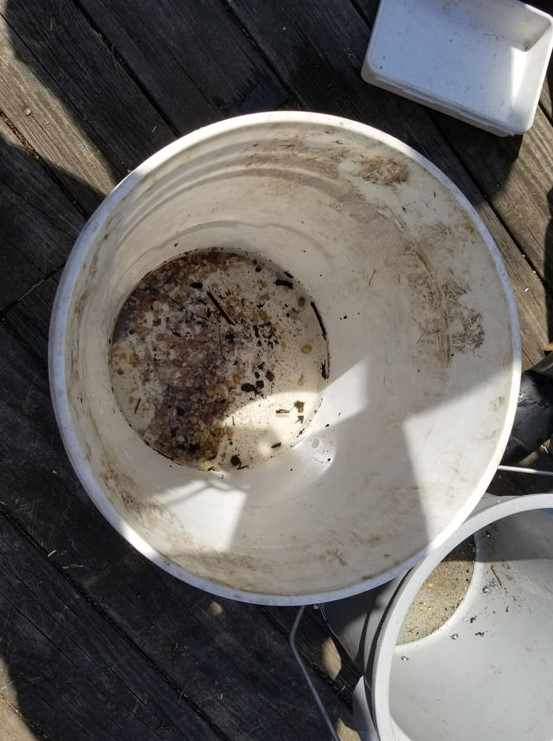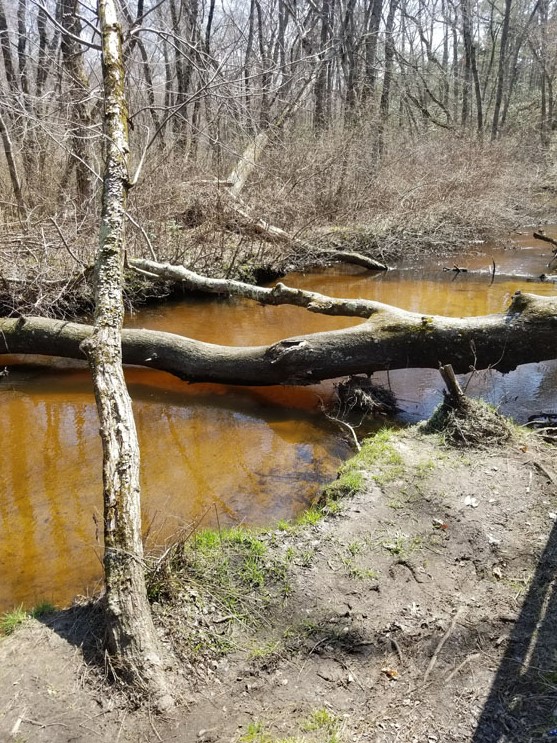Naturalist Excursion: FREC in Jackson, NJ
As the group gathered outside again to walk the trails down to the Toms River, our instructor, Becky Laboy, pointed out that as we approached the water, the plants we observed were changing. Wet land obligate plants require lots of water and the kind of plants we see indicate the moisture present in the soil.

We got to the water and Karen and Casey put on waders to get into the Toms River and do a habitat assessment.
When volunteers assess the health of the river, they test the water temperature, the depth, the rate of flow and the macro invertebrates that are present. Macro invertebrates are mostly insects, but also include clams, mussels and snails. They collect samples from multiple places; the banks, around debris and the gravely bed and combine them in one big bucket. The sample is then poured into trays and depending on the macro invertebrates that are present, researchers can tell if the water is very clean, semi clean or very polluted.



We were assured that the color of this water is not indicative of poor water quality but is actually the result of tannins that come from the cedar trees. This actually acidifies the water and reduces the oxygen levels which inhibits the growth of bacteria and contributes to a relatively clean, albeit not quite clear, river.
The samples collected contained a few caddisflies, mayflies and damsel flies. Caddisflies are interesting because the larval stage of this insect finds a bit of bark and hides beneath it to protect itself from predators. As the fly grows, it collects more bark and secretes mortar to hold the bits together to expand it’s hiding place/house.
Volunteers submit a form with their findings to the DEP to contribute to scientific research about the state of our local water ways.


